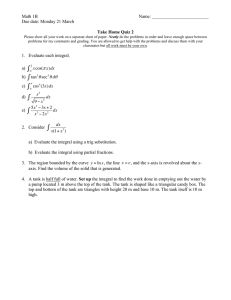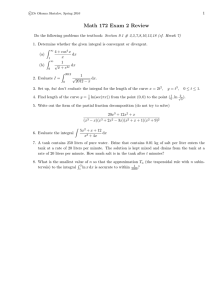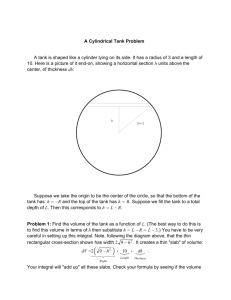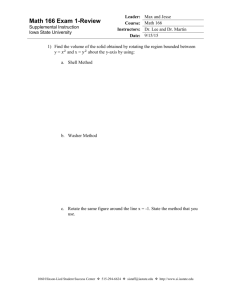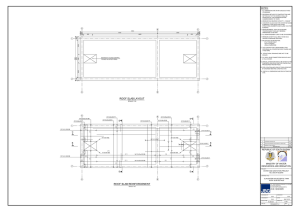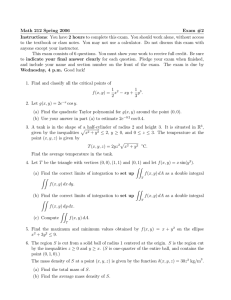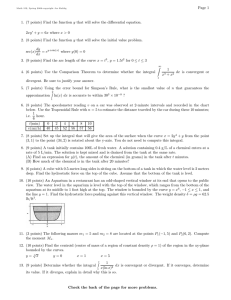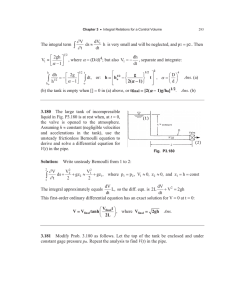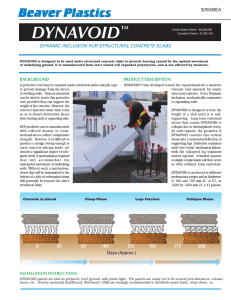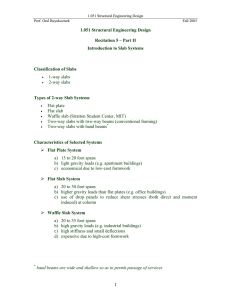A Study Guide on Work Revised by the Learning Center
advertisement
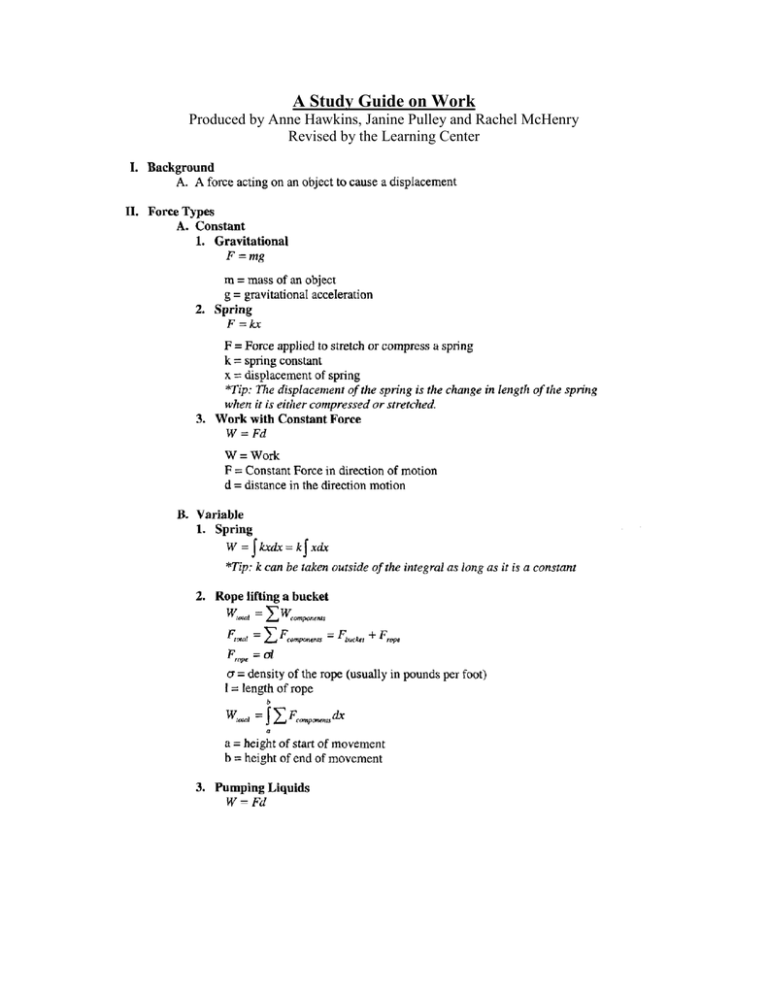
A Study Guide on Work Produced by Anne Hawkins, Janine Pulley and Rachel McHenry Revised by the Learning Center Pumping Water While quite different, this problem also involves a work integral. When setting up this integral, it is instructional to consider the water in the tanks as being composed of many stacked thin ‘slabs’ of thickness y . Total work can be thought of as the sum of the work required to lift each individual slab. However, before we start with work, we must start with volume and area. In our case, the tank is rectangular and the area of each slab is constant: A 10 ft 12 ft 120 ft . From this we can get V , the change in volume of one of these slabs. V area thickness 120y Force then equals the density (a constant which we have) times the volume, V . F y 62.4 120y Since we are emptying this tank from the top, the variable quantity in this problem is the vertical distance that the water is being pumped. As the water level in the tank decreases, each ‘slab’ requires more work to pump out. This is expressed symbolically as: Top — y = 20— y The integral for this particular problem will be b W density F y dy a W 62.4 120 20 y dy 20 0 The bounds are simply the heights of the top and the bottom of the tank (defining the bottom as zero, even though the top is at ground level) (Final answer: W = 1497600J)

